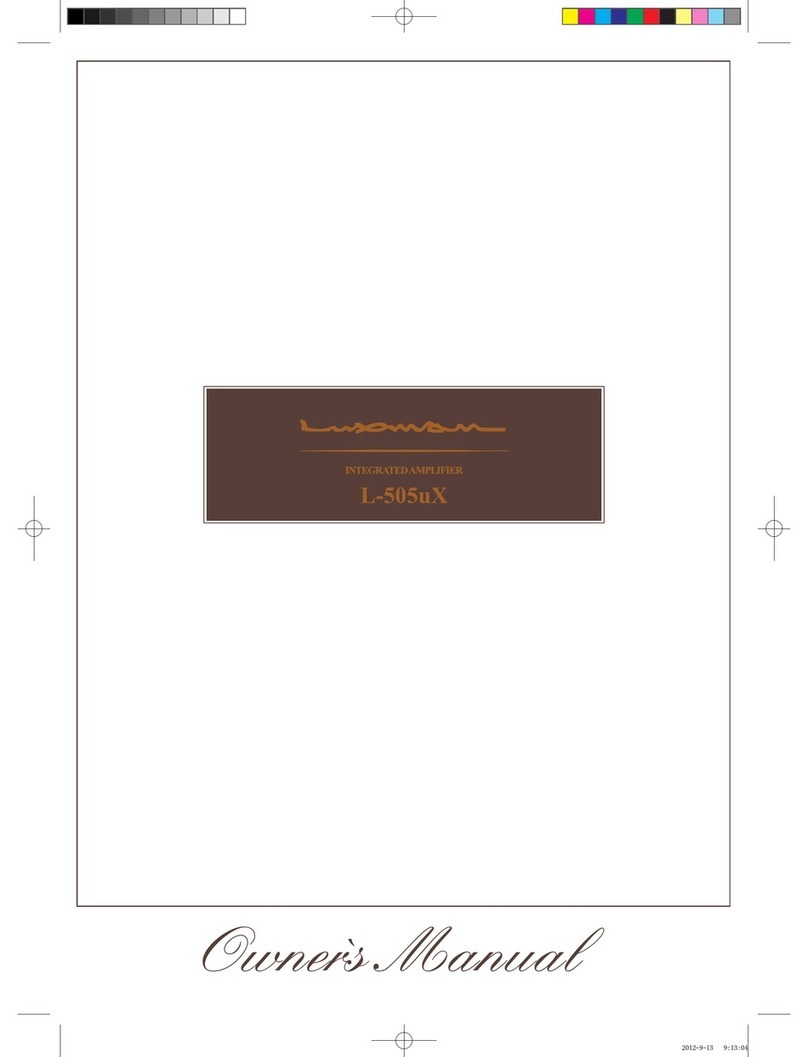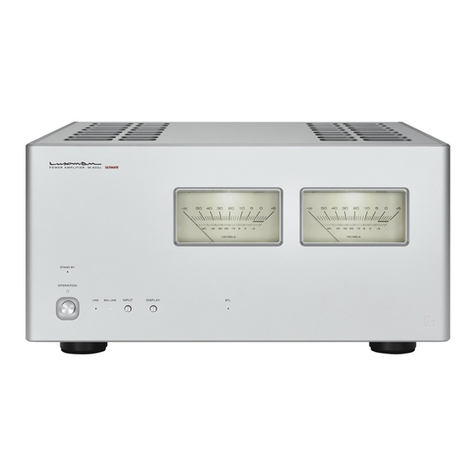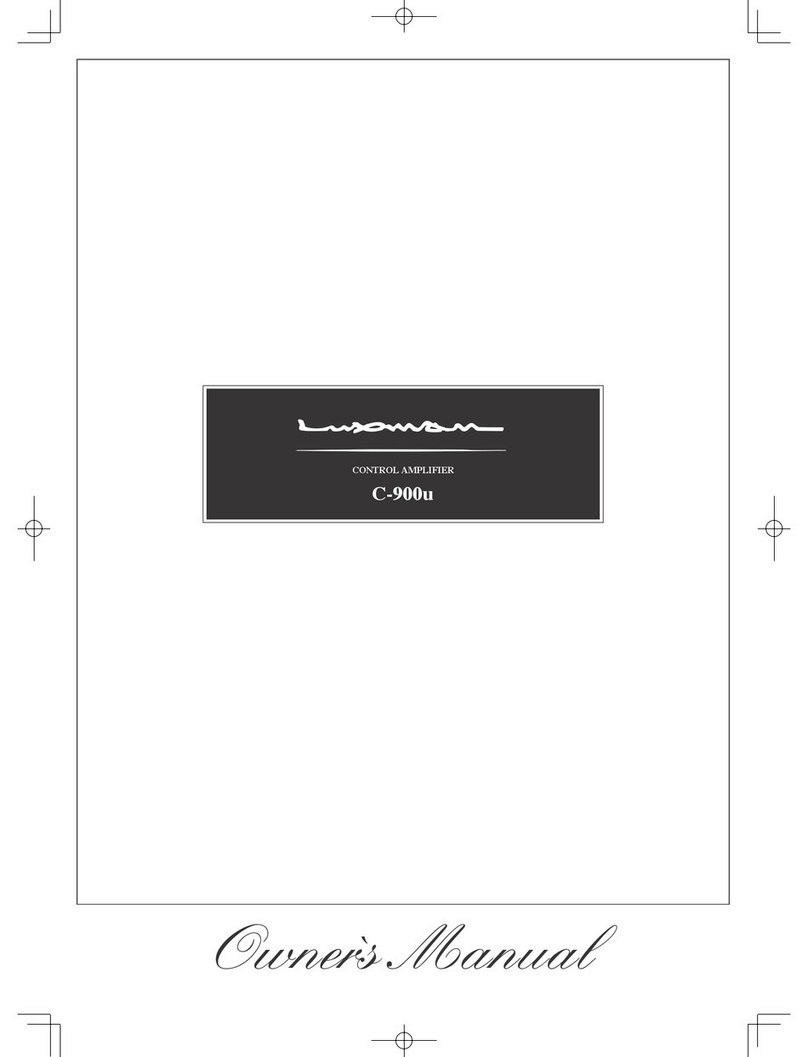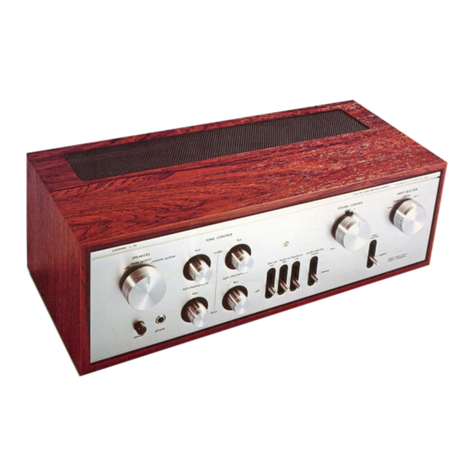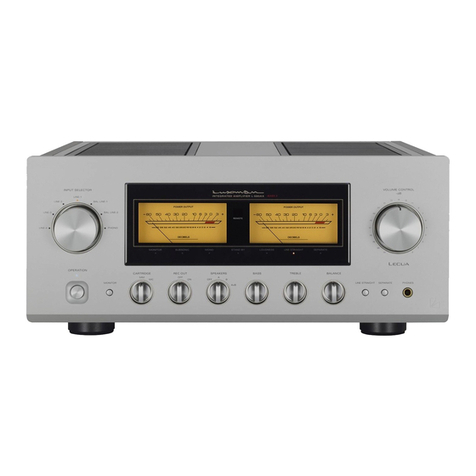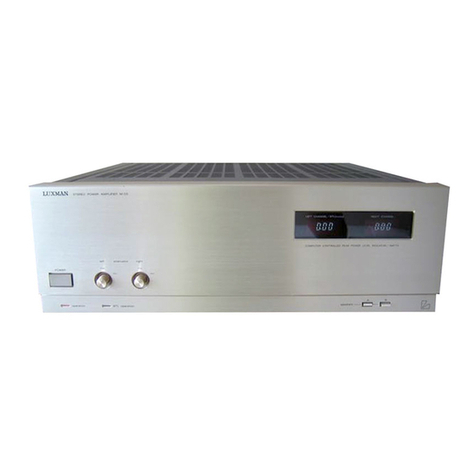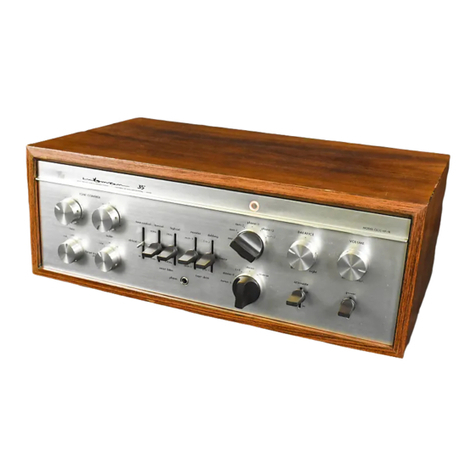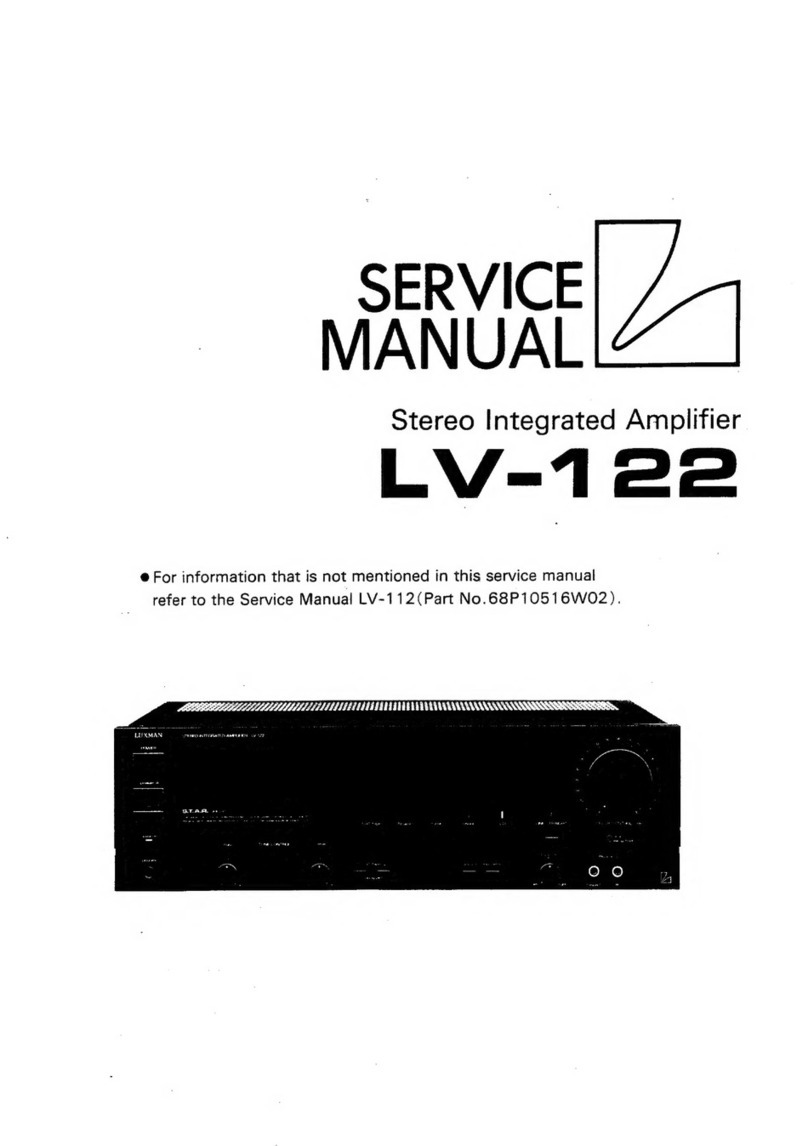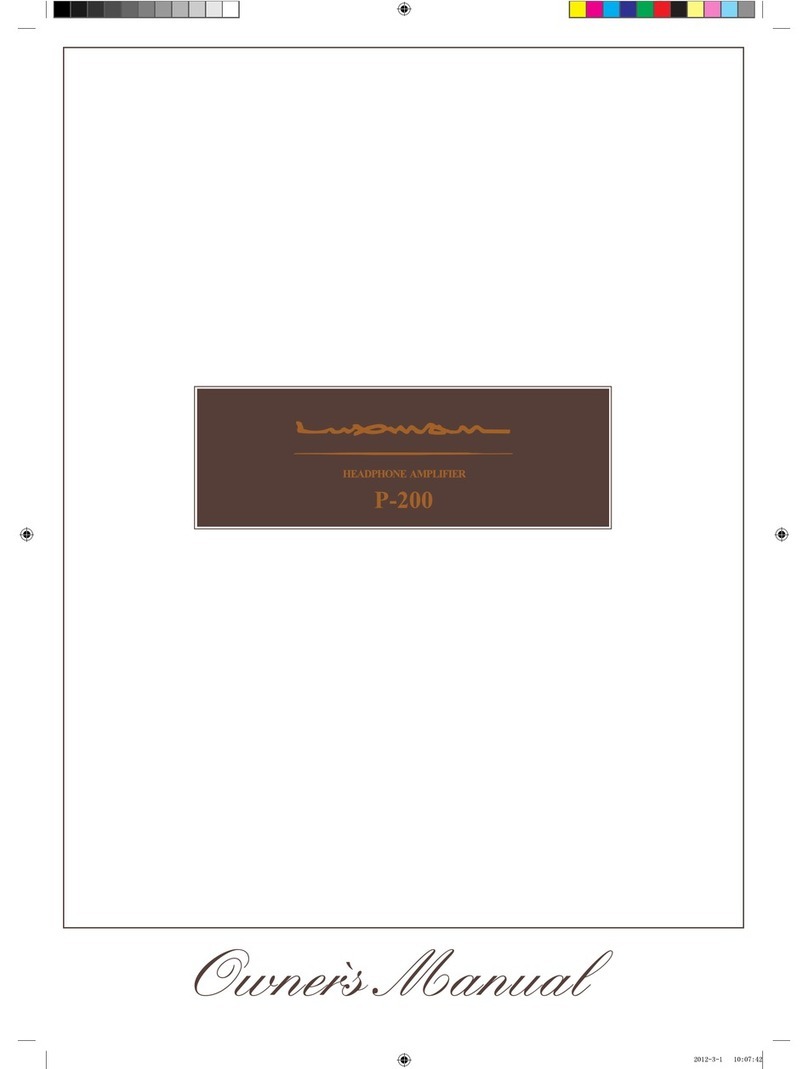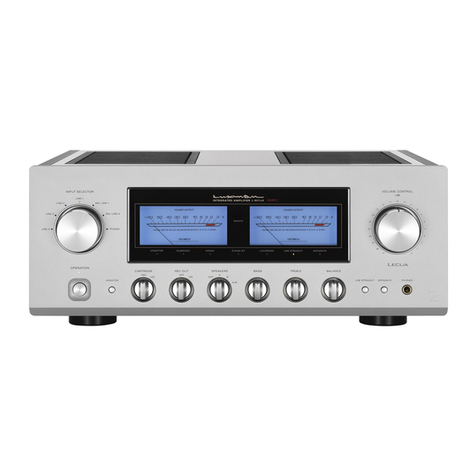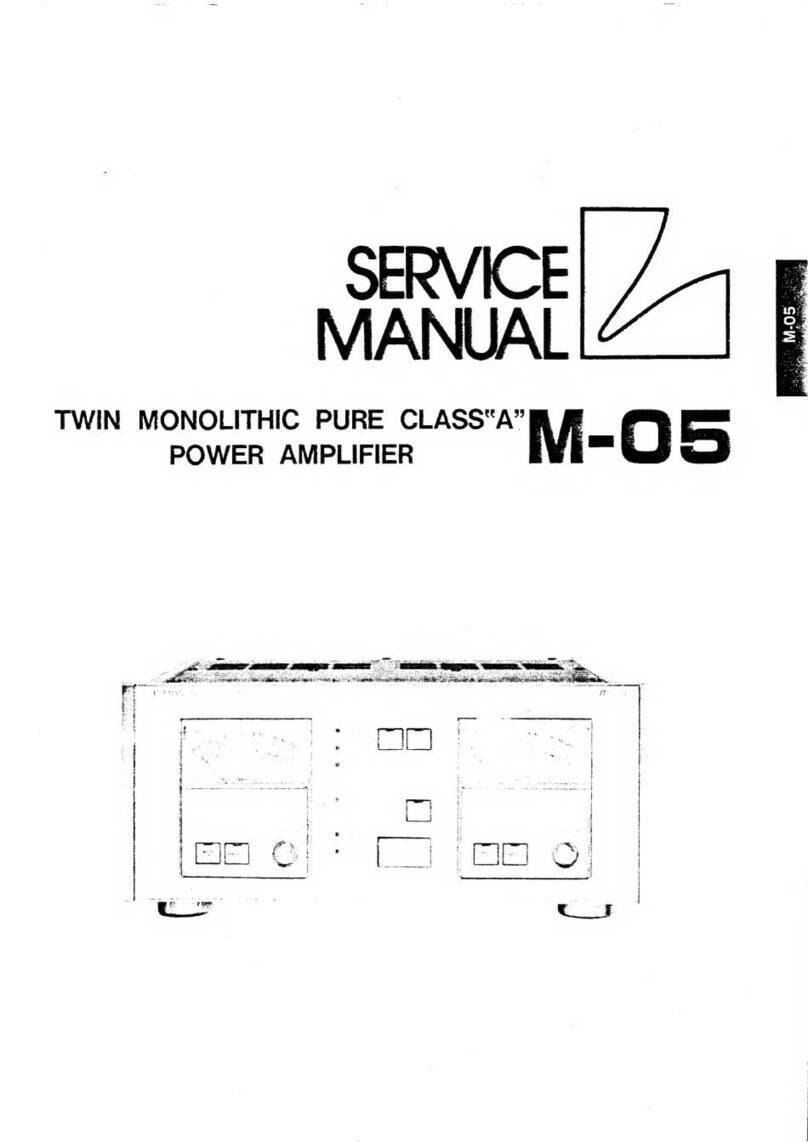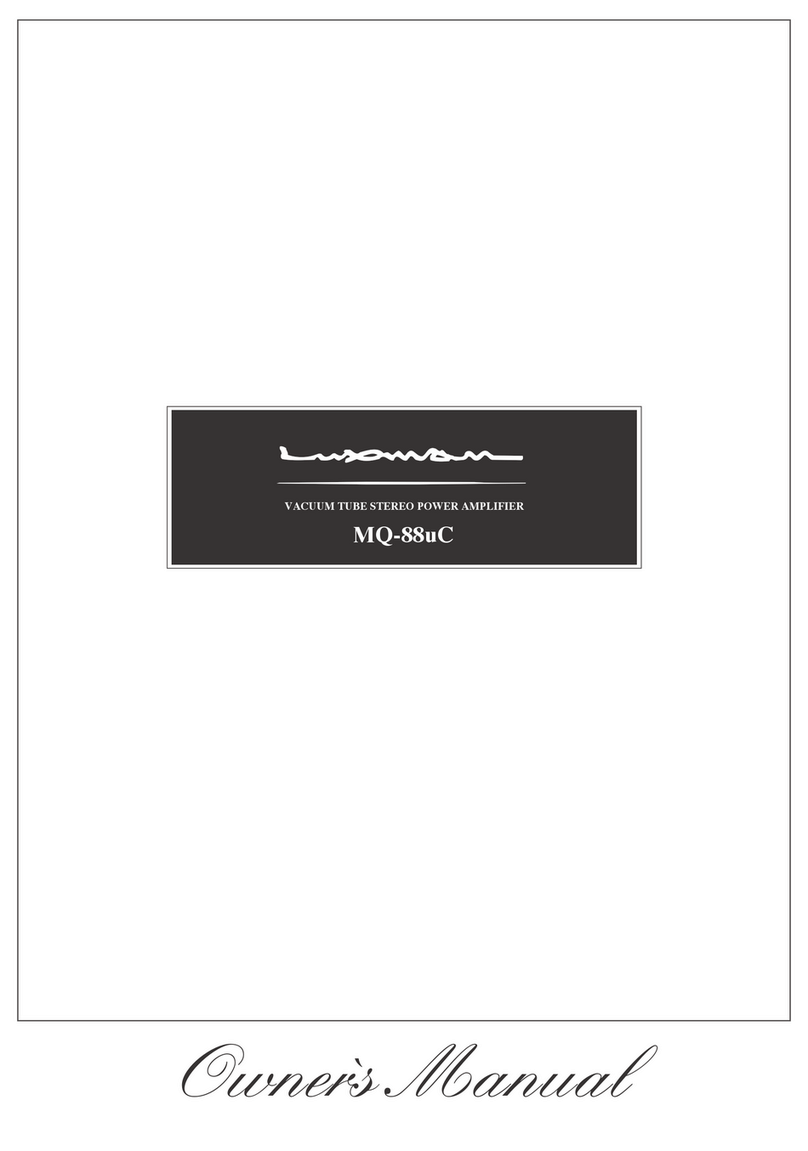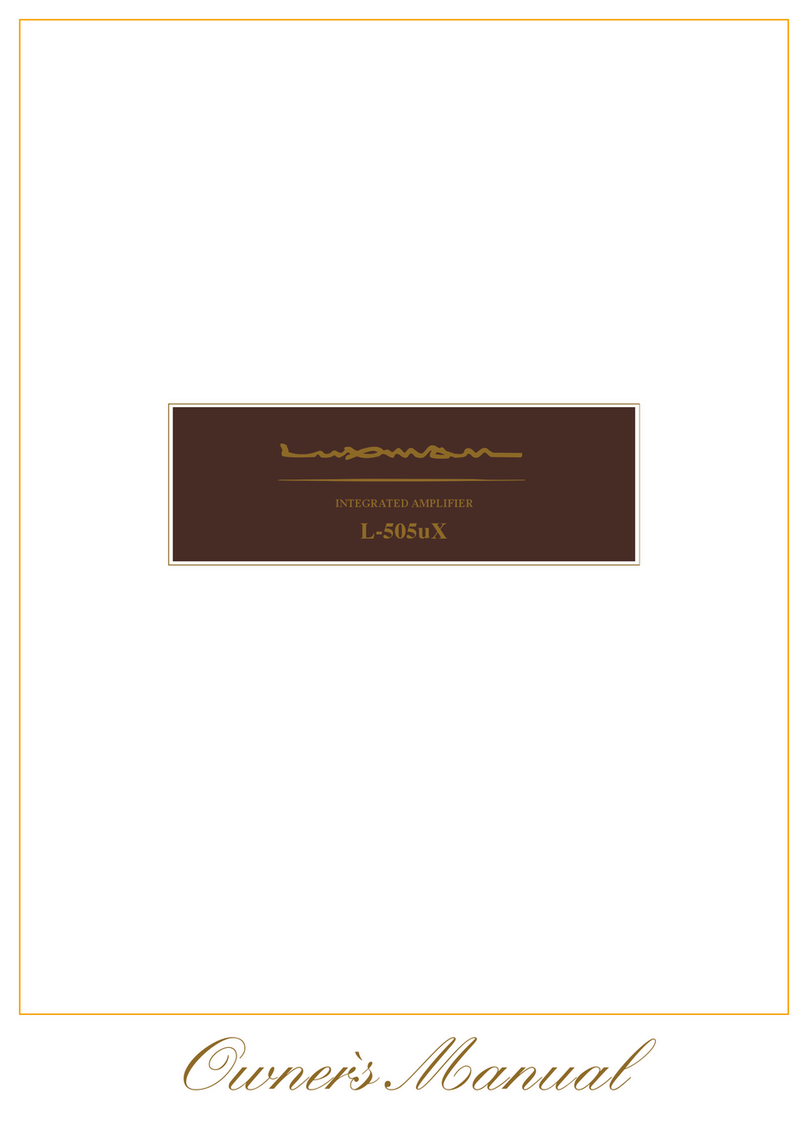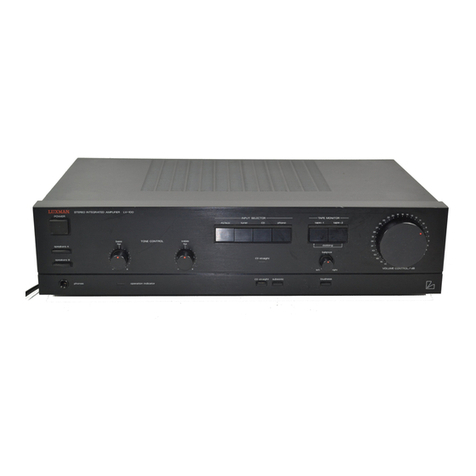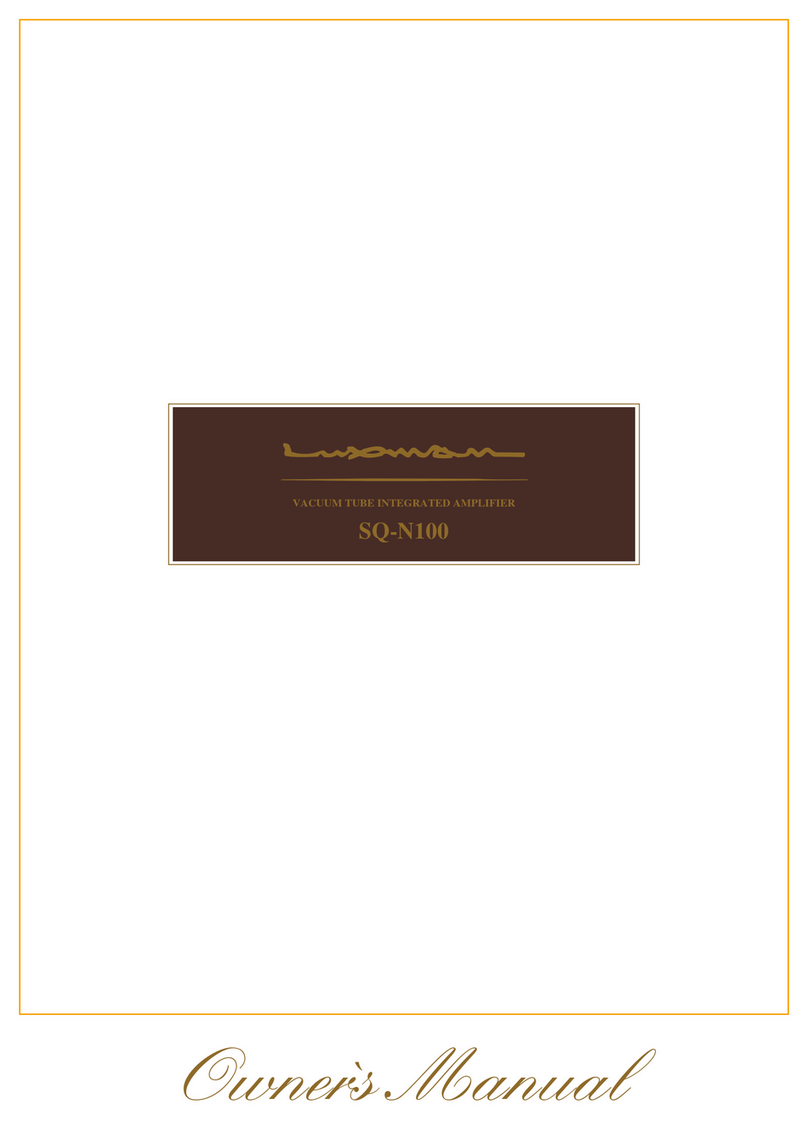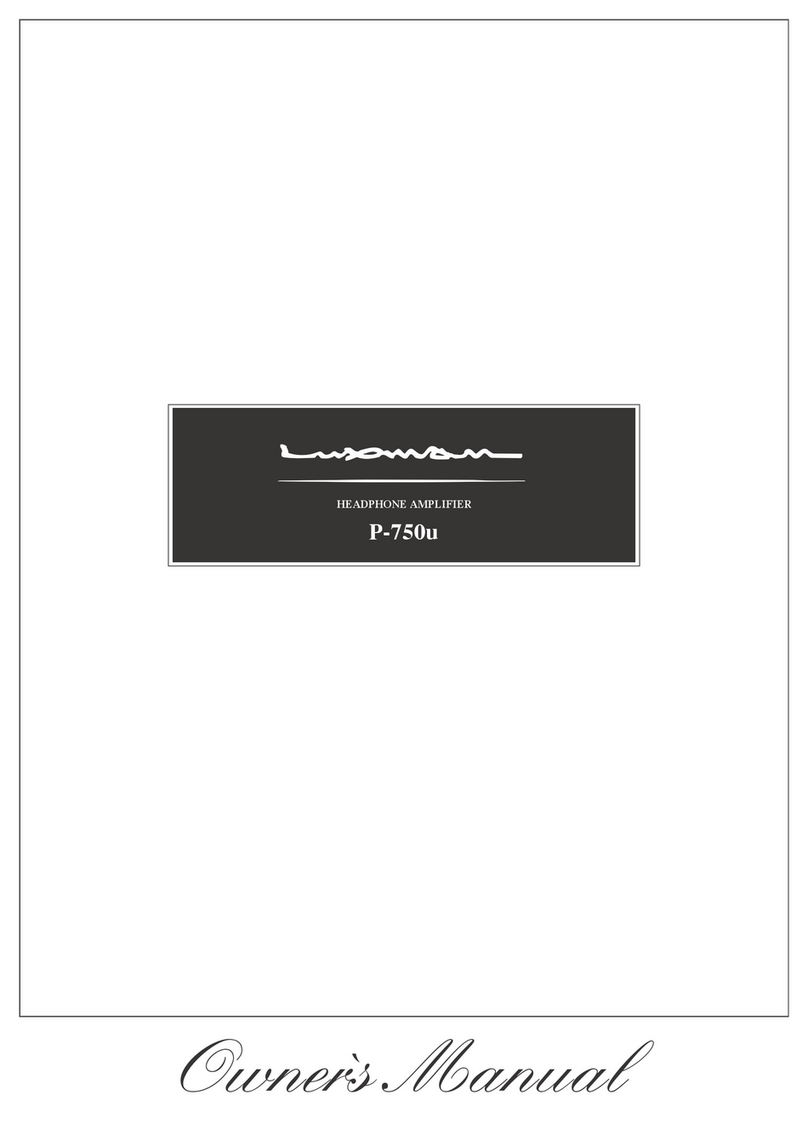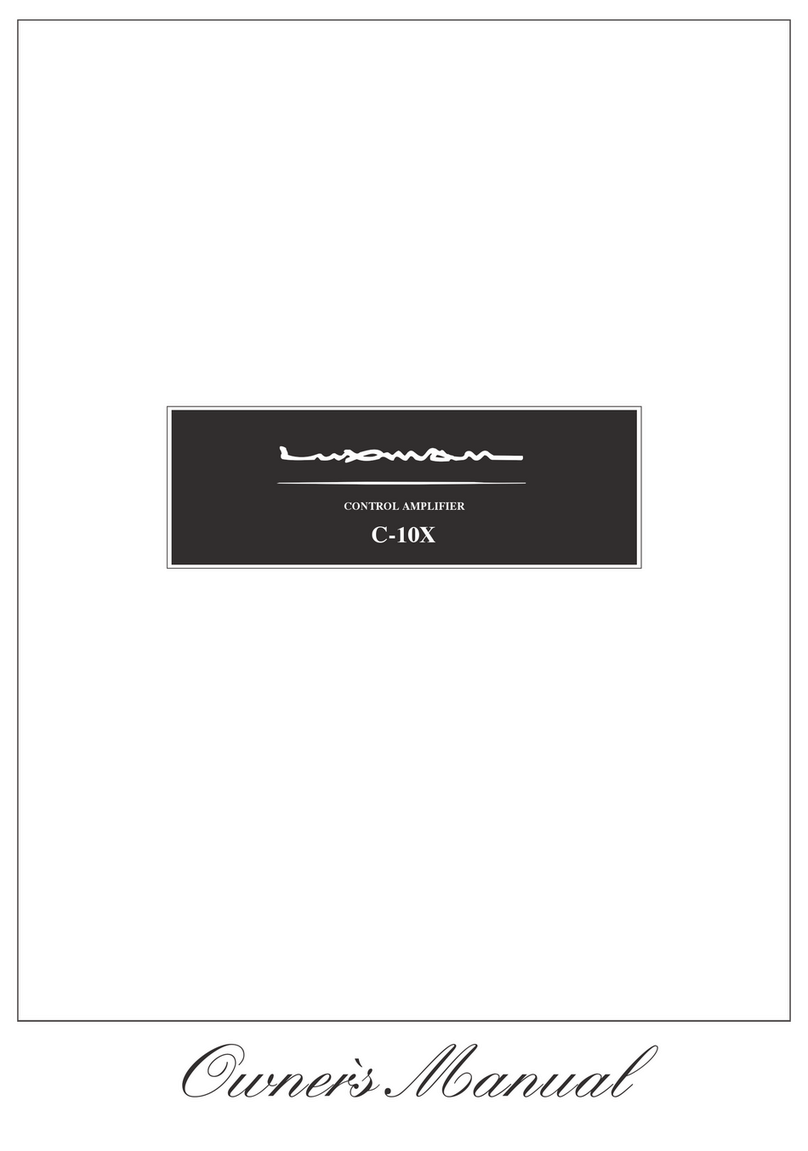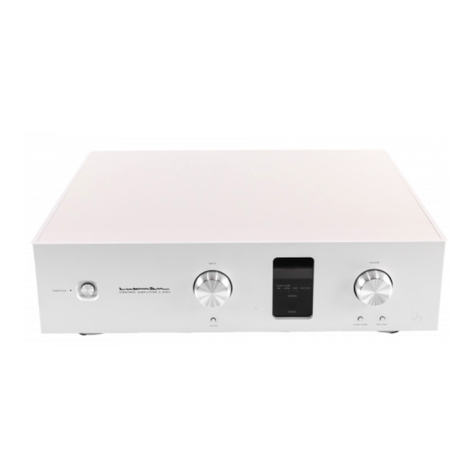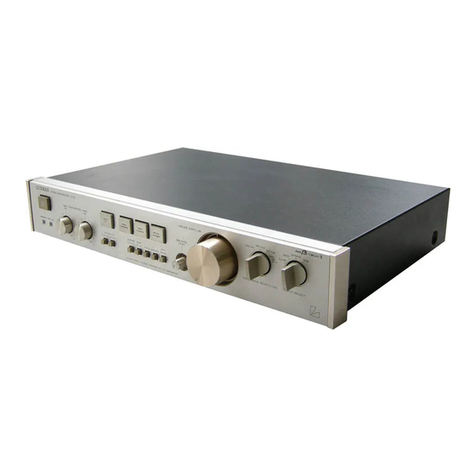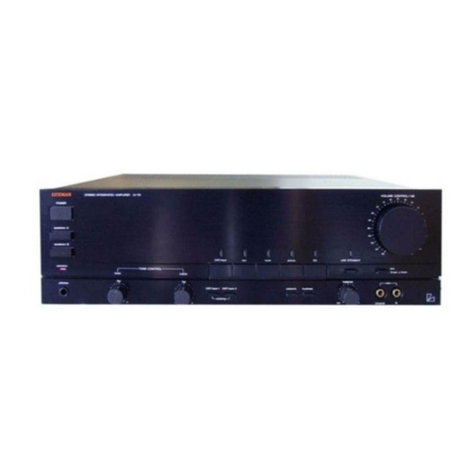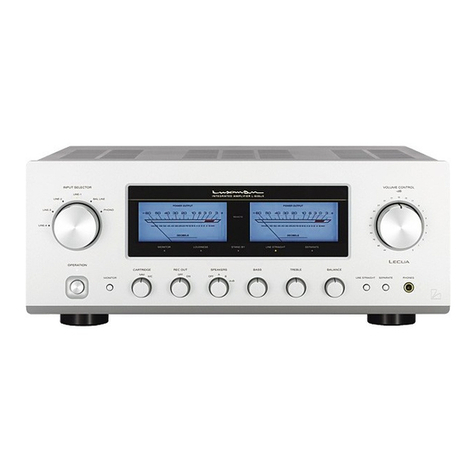
1
VACUUM TUBE INTEGRATED AMPLIFIER SQ-N150
Precautions
Installation place
Install this unit in a location where good ventilation and heat
radiation are assured.
Especially, installation of this unit where direct sunlight is
present, where the temperature rises excessively high such
as close to a heater, or where it is humid or dusty may
cause a malfunction even if heat is efficiently released.
Therefore, do not install this unit in such places.
Ventilation holes
Do not block the ventilation holes of the top and bottom
panels. If the amplifier is installed on a rack or the like, se-
cure ample space for cooling and leave the door open. Do
not pile up other things on the amplifier and never put arti-
cles on it. Failure to observe this may cause a malfunction.
Note:
For heat dispersal, do not install this equipment in a con-
fined space such as a book shelf or similar unit.
Wall
*Note
* *
*
Precautions in connecting with other
components
When connecting this unit to input devices such as a CD
player, an SACD player, an analog record player , a tun-
er, and a recorder, be sure to turn off the power of this
unit and all other connected devices. Failure to observe this
may generate a strong noise resulting in speaker damage
or cause a malfunction.
The pin-plug to be inserted in each input terminal of this
unit shall be pushed in firmly. If the grounding terminal is
inadequately connected, noises including hum may be gen-
erated, resulting in an adverse S/N ratio.
Cautions in connecting speakers
When making speaker system connections, exercise extra
care not to short-circuit between (+) and (–) of the speaker
terminals and speaker input terminals of this unit.
If a large signal is applied to the amplifier with its circuit left
short-circuited, a large current may be passed through the
output circuit and cause a malfunction.
The sound is not generated shortly after
the power supply is turned on.
This amplifier is equipped with a time muting circuit in order
to separate the output circuit. Therefore, no sound will be
generated shortly after the power supply is turned on.
If the volume control is at a high level when the time muting
circuit is canceled, a large sound will suddenly come out.
Please be advised that the volume control shall be set to a
low level at first and adjusted after the sound comes out of
the speakers.
Repair and adjustment
When repairs or adjustments are needed, please ask the
dealer where you bought the unit.
Cleaning
For cleaning, use a piece of soft cloth to wipe the unit such
as cleaning cloth. When the dirt is hard to remove, use a
small amount of neutral detergent to wipe, and then wipe
the unit with dry cloth. Do not use a solvent like benzine or
thinner because such a substance can damage the exterior.
Batteries
Warning: Batteries used for the remote control shall not be
exposed to excessive heat such as sunshine, fire or the like.
Safety caution
Caution
• This unit is heavy. Be careful when unpacking, carrying, and
installation.
• This unit is a vacuum tube amplifier. When the unit is in oper-
ation, the main body gets hot. Be careful not to touch it with
your bare skin. For safety, do not use this product in a place
where children or unchained animals are present.
